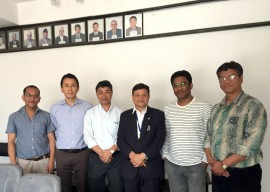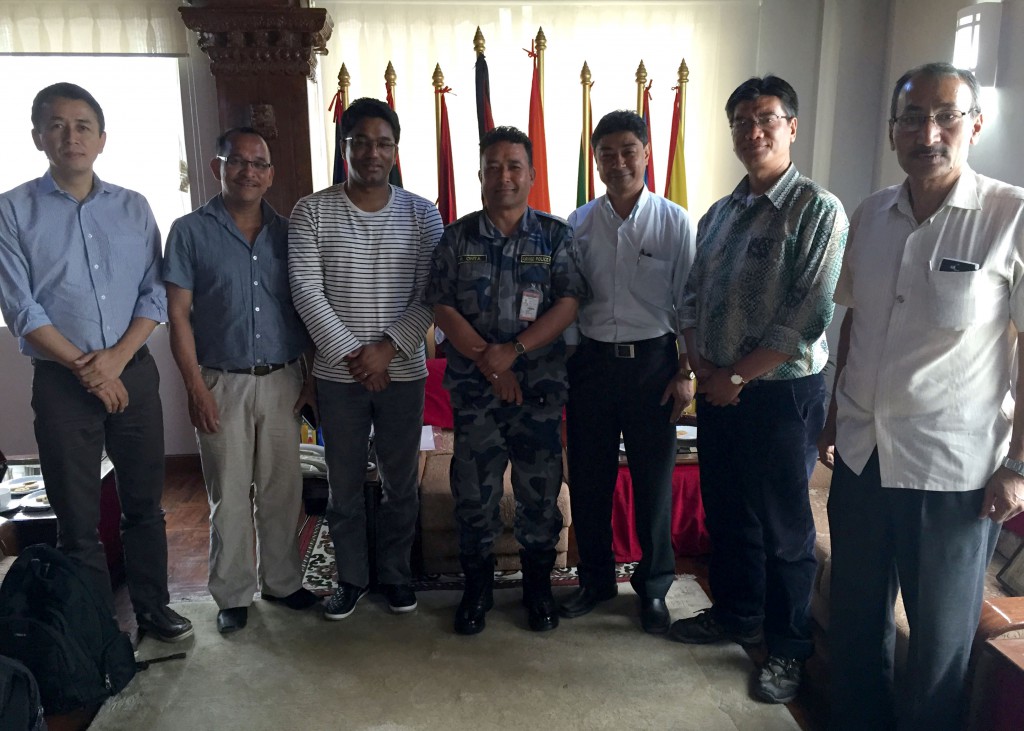
A three-member team from the Asian Institute of Technology (AIT) comprising of Mr. Gyanendra Sthapit, Director, AIT Habitech Center; Dr. Sangam Shrestha, Associate Professor, Water Engineering and Management, School of Engineering and Technology (SET); and Mr. Karma Rana, Institute Secretary, visited Nepal from 5-11 May 2015. The team was sent by AIT President to conduct an on-the-spot survey to ascertain the ways in which AIT can assist.
Joined by senior AIT alumni in Nepal, the AIT team met with various stakeholders, which helped provide a broad overview of efforts being taken, at different levels in Nepal. They met with several organizations working on Nepal’s rebuilding and rehabilitation efforts including: AIT Alumni Association (AITAA) Nepal Chapter; National Planning Commission; Minister of Urban Development; Armed Police Force; Department of Housing and Urban Development; Department of Education; UN–HABITAT Nepal; International Centre for Integrated Mountain Development (ICIMOD); Environment and Public Health Organization (ENPHO); Different Chapters of Rotary Nepal (Patan and Bagmati); and Nepal Wireless.
In a visit summary report submitted to AIT President, the team informed that although the primary focus in Nepal was still on rescue and relief, the long-term plan focuses on rebuilding and reconstruction aspects. The visit was an opportune occasion for AIT to present areas in which AIT could partner and assist in the efforts.
It was reported that around 800,000 homes were uninhabitable and 500,000 homes were totally destroyed. The government’s immediate priority before the coming raining season or “monsoon” (June-August), which starts around mid-June and lasts for around 3 months, is to provide adequate shelter. To address the immediate concern of providing shelter before the monsoon, the government plans to distribute corrugated tin sheets to thousands of households, in the immediate future, with the aim of covering around 4,000 houses in one day, distributing 2 sheets to each house, through coupons and setting up of collection depots.
For a long-term solution, the government plans to come up with a menu at the Village District Level (VDC), after the monsoon and the Dashain festival period (October-November), with options for a more permanent housing structure. AIT’s Habitech technology, is one option being considered and the Vice Chairman of National Planning Commission (NPC) recommended that AIT prepare a brochure in Nepali, with simple instructions on how to use the Habitech technology.
AIT’s Habitech technology was used in housing and community projects in Thailand after the tsunami in 2004 and in Myanmar after Cyclone Nargis. The “Post-Tsunami Rehabilitation Project” in Thailand was awarded “Best Community Housing Project” for year 2008.


